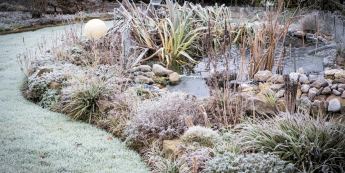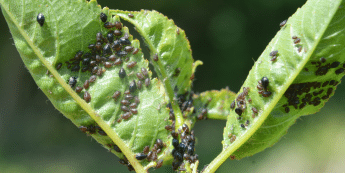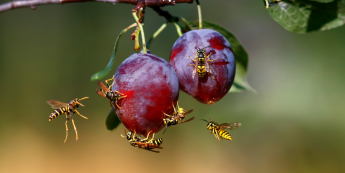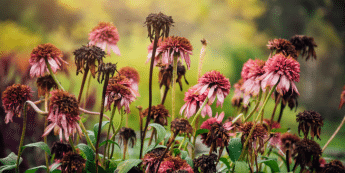What Winter Leaves Behind: Snow Mould
by Rob Sproule
Wouldn’t it be nice if we were greeted by green, fresh grass when the snow finally melted? Unfortunately, the thaw often leaves behind yet another yucky mess.
A wet late summer, combined the massive amount of moisture that a large thaw brings, have resulted in an outbreak of snow mould in the Edmonton area. If your lawn is covered, don’t despair. It won’t last long and there are ways to prevent a similar outbreak next spring.
What Causes it?
Grey snow mould is also called Typhula blight, and produces 3″ to 12″ wide circular patches of silvery grey fungus (looks similar to spider webs) on your lawn. As allergy sufferers know, it can wreak havoc on the sinuses, but it’s harmless besides that and will clear up quickly as the lawn dries.
Like all fungus, snow mould happens when dormant spores are given the right conditions to thrive. The time to think about snow mould is in the fall; by the time the snow falls, the severity of your spring outbreak has been largely decided.
To prevent the mould, avoid high nitrogen fertilizers late in the fall; reach for the fall blend instead. Keep cutting the grass until it stops growing and, especially if you have a mature lawn, rake and/or aerate in order to keep thatch at a minimum.
Fungus hates wind, so if you big trees rimming yard, thin out any tree and shrub deadwood. On top of keeping the snow mould down, this will give your plants a healthy boost.
If our winter snow cover arrives before a cold snap, more spores will survive (along with more mice) in the warmth trapped under the snow. During the thaw, melting snow provides the moisture necessary to energize the dormant spores.
How do I Get rid of it?
Once the mould appears, the only silver bullet to getting rid of it is patience. If you’re an allergy sufferer, you may want to close your windows.
The mould will vanish as soon as the lawn dries. If there’s a lot of snow, and if there are significant spring rains, this may take a week or more. Once fall rolls around, focus on prevention.
You may be tempted to apply a fungicide to get rid of it, but I don’t recommend spending the money or the energy. The mould doesn’t last long and if there’s any damage to the lawn, it’s probably already happened by the time you notice it.
Leave the rake in the garage until the lawn dries out, but once it does you can rake up the dried fungus and dead grass and throw it in the garbage (don’t put it in the compost pile). Make sure to disinfect your tools once finished.
What damage will it cause?
Grey mould infects grasses’ leafy tissue and only causes superficial indirect damage. If it’s thick, however, it will choke out the lawn beneath it and leave bare or brown patches in its wake.
Wait until the lawn is actively growing and simply sprinkle a half inch of sterilized soil and some lawn seed over the affected areas. Water, wait, and it will be like the mould never happened.


















